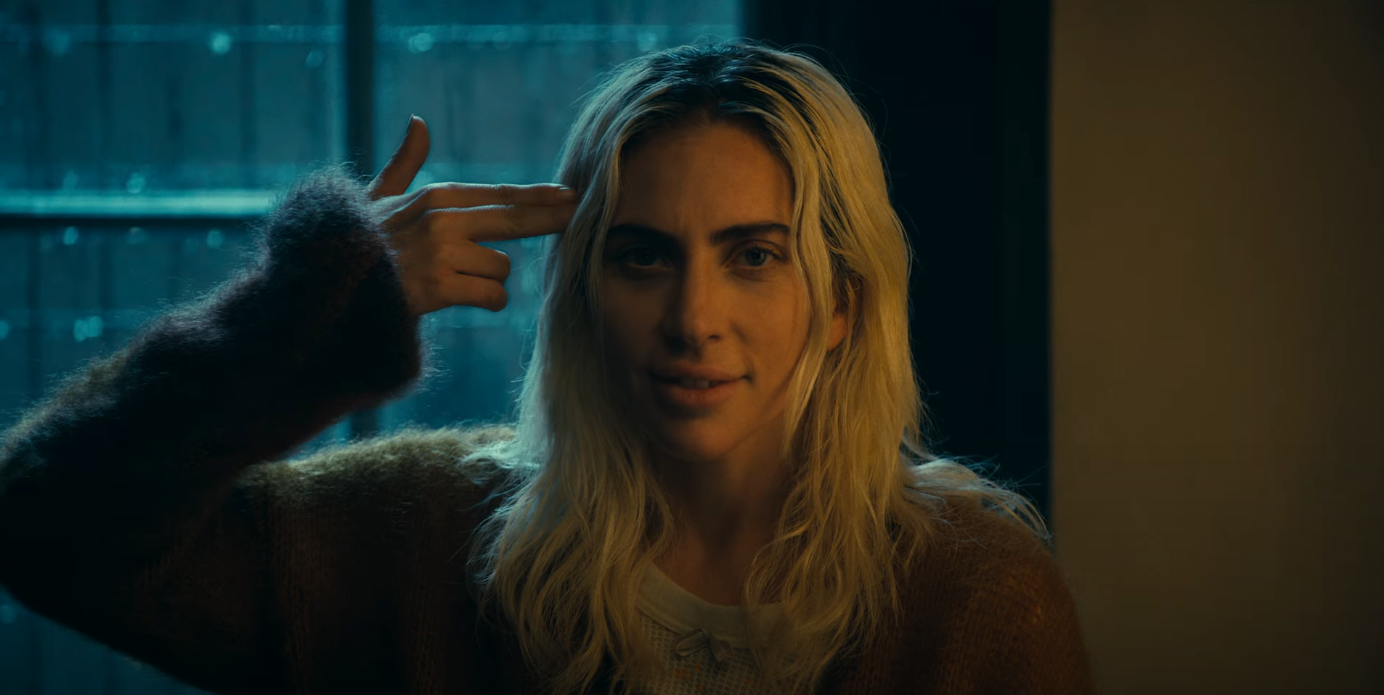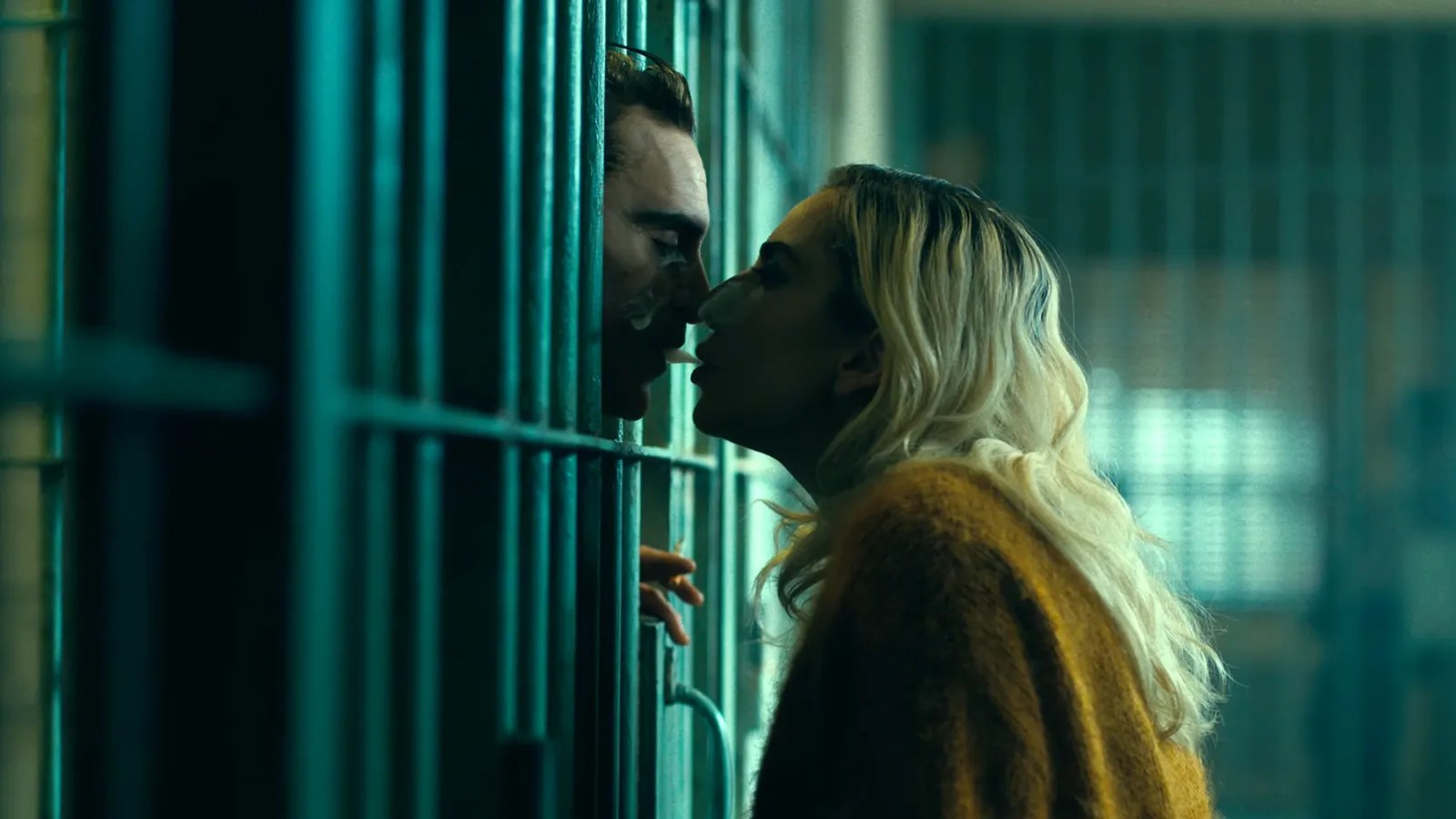To preface this review of Joker: Folie à Deux, I have to say that I did not like the first film. So, if you loved it, maybe you’ll have a different opinion of this one. But I doubt it because Joker 2 is so drastically different from its predecessor.
After the staggering success of Joker, Warner Bros. was quick to corral Todd Phillips into writing and directing a second film, even though the first film was a relatively standalone tale that just happened to be loosely based on the Joker from Batman. So, we get this second film focussing on the trial of Arthur Fleck/Joker (Joaquin Phoenix) and his disturbing relationship with Lee Quinzel (Lady Gaga), a kind of riff on Harley Quinn. The plot – what little exists – simply flows us through Arthur’s struggles with being the Joker and the horrific influence that Lee (she’s never referred to as Harley Quinn) has on his mental stability, all coming crashing down as Gotham falls apart.

But this film isn’t really about the plot — or at least it doesn’t want to be. It is, actually, quite unclear what Folie à Deux wants to be about. Joker and Lee’s relationship, as the French title suggests, is one based on delusion, and the movie seems to want to play in that space, almost asking the audience to question every moment of reality in the film. This, of course, comes out in the fact that the film is, indeed, a musical. There is near constant signing throughout the film, whether that be from characters humming a tune to themselves or musical dream sequences inside Arthur’s head.
The question is, to what end? Arthur’s new infatuation with musicals and music (mostly classic standards) wasn’t present at all in the first film and thus feels disconnected from the character we met there. Lee is introduced in an Arkham Asylum music class, giving some excuse for Arthur’s new obsession, but even before that moment, the film has introduced the musical aspects thanks to an opening animated short that recaps the first film with a musical number included. The entire film functions like this, as if made for no other reason than because they had an idea and no one said no.

Related: Joker: Folie à Deux’s Ending, Explained
It is reminiscent of another sequel film that Warner Bros. practically forced into being, The Matrix Resurrections. In that case, Lana Wachowski, after decades of WB prompting her and her sister to make a sequel, finally gave in and delivered a movie that very obviously was a takedown of the idea of never-ending franchises and IP ownership. Folie à Deux feels a bit like Phillips in the same boat as he was cajoled to make another film he himself said wasn’t needed. However, instead of metaphorical insight, Phillips went full-on spite, delivering a sequel so off the wall and strange that it’s hard to understand how it even exists. It’s as if he made an entire movie with the mantra of “Here’s your sequel, a**holes.”
Then again, maybe Phillips just has nothing to actually say and is just covering it up with surreal arthouse “style.” That would definitely be in line with the first film and explain a lot of this movie’s inconsistencies with the first. I will, however, note that it’s possible that these two films function better together as a whole, with Phillips rejecting some of the interpretations of the Joker as a hero, especially by the conclusion of the sequel, as things start falling apart for poor Arthur Fleck. If one considers these movies as Arthur Fleck films and not Joker movies, then the arc of the two films at least makes sense, even if the tonal and musical shifts do not. If that is indeed the case, then the two film’s thematic tones become far more palatable.

The problem is that it just isn’t clear what the case is. Sure, both Phoenix and Gaga deliver strong performances, but just what it’s all in the aid of is so stupendously unclear as to render the movie pointless outside of nerdy arguments. To be sure, there will be plenty of discussion about Joker: Folie à Deux, but there won’t be much enjoyment of it. There won’t be people lining up to see it again and again despite the inevitable rehashing of its merits (or lack thereof). I’d wager this will be a film that everyone talks about for some time to come but that no one rewatches because, in the end, it’s just not that interesting to watch.
So, whether the movie is some middle finger by Phillips to the world or just a meaningless rambling, the joke really is on us. Either way, we’re not even getting a satisfying punchline.
Joker: Folie à Deux is now playing in theaters






Published: Oct 4, 2024 07:42 am